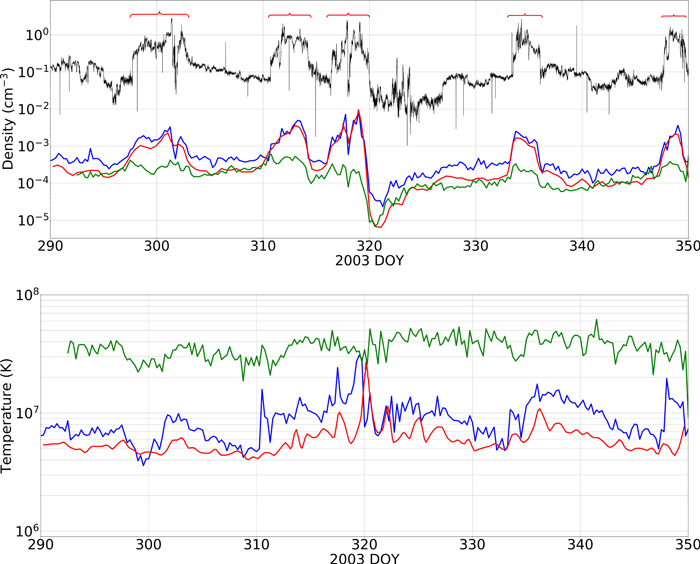Nonthermal, pickup ions (PUIs) represent an energetic component of the solar wind (SW). While a number of theoretical models have been proposed to describe the PUI flow, of major importance are in situ measurements providing us with the vital source of model validation. The Solar Wind Ion Composition Spectrometer (SWICS) instrument on board the Ulysses spacecraft was specifically designed for this purpose. Zhang et al. proposed a new, accurate method for the derivation of ion velocity distribution function in the SW frame on the basis of count rates collected by SWICS. We calculate the moments of these distribution functions for protons (H+) and He+ ions along the Ulysses trajectory for a period of 2 months including the Halloween 2003 solar storm. This gives us the time distributions of PUI density and temperature. We compare these with the results obtained earlier for the same interval of time, in which the ion spectra are converted to the SW frame using the narrow-beam approximation. Substantial differences are identified, which are of importance for the interpretation of PUI distributions in the 3D, time-dependent heliosphere. We also choose one of the shocks crossed by Ulysses during this time interval and analyze the distribution functions and PUI bulk properties in front of and behind it. The results are compared with the test-particle calculations and diffusive shock acceleration theory.

Full Article:
Smith, W. P., Renfroe, K., Pogorelov, N. V., Zhang, M., Gedalin, M. (SHARP) and Kim, T. K. (2022). Bulk Properties of Pickup Ions Derived from the Ulysses Solar Wind Ion Composition Spectrometer Data. The Astrophysical Journal, 933, doi: 10.3847/1538-4357/ac73f2
License: CC BY 4.0





